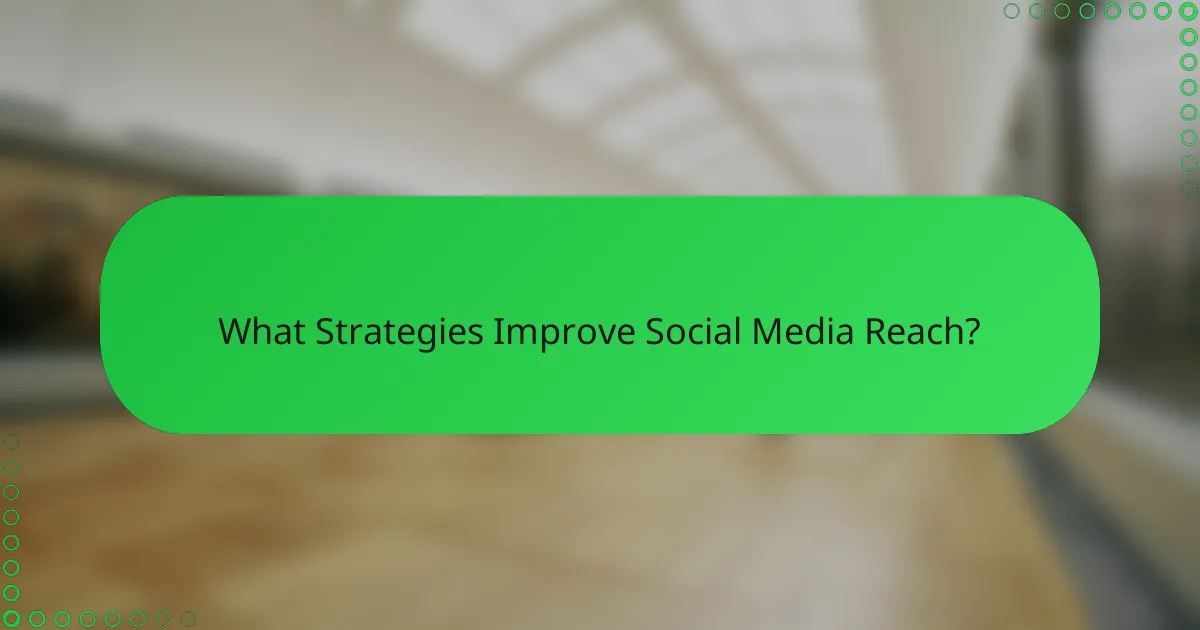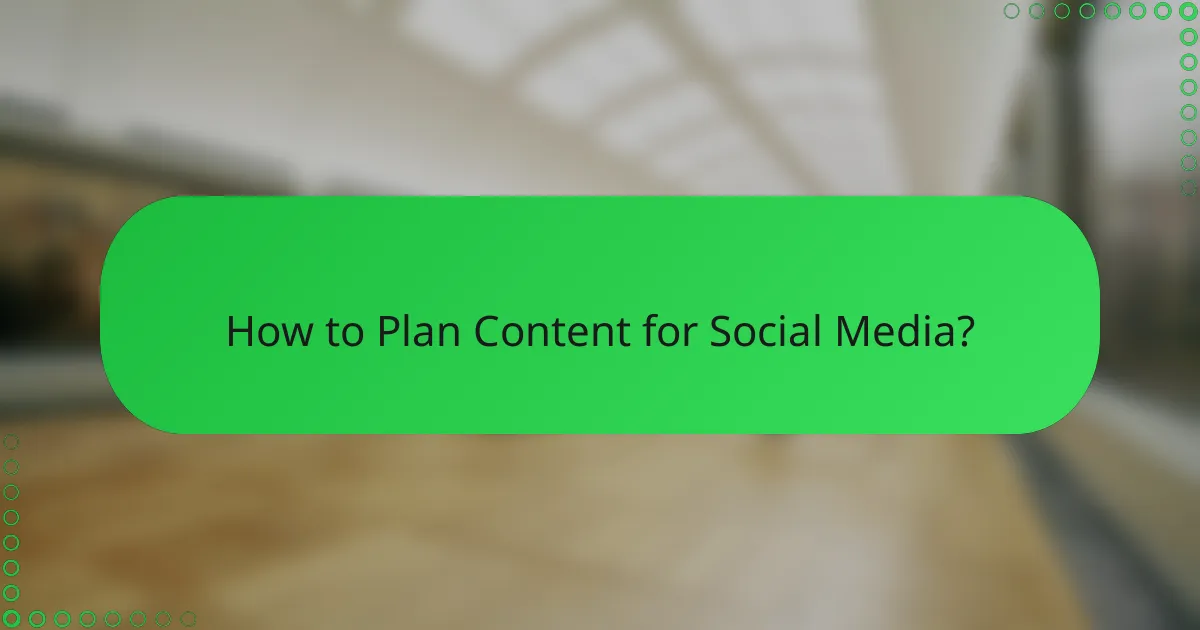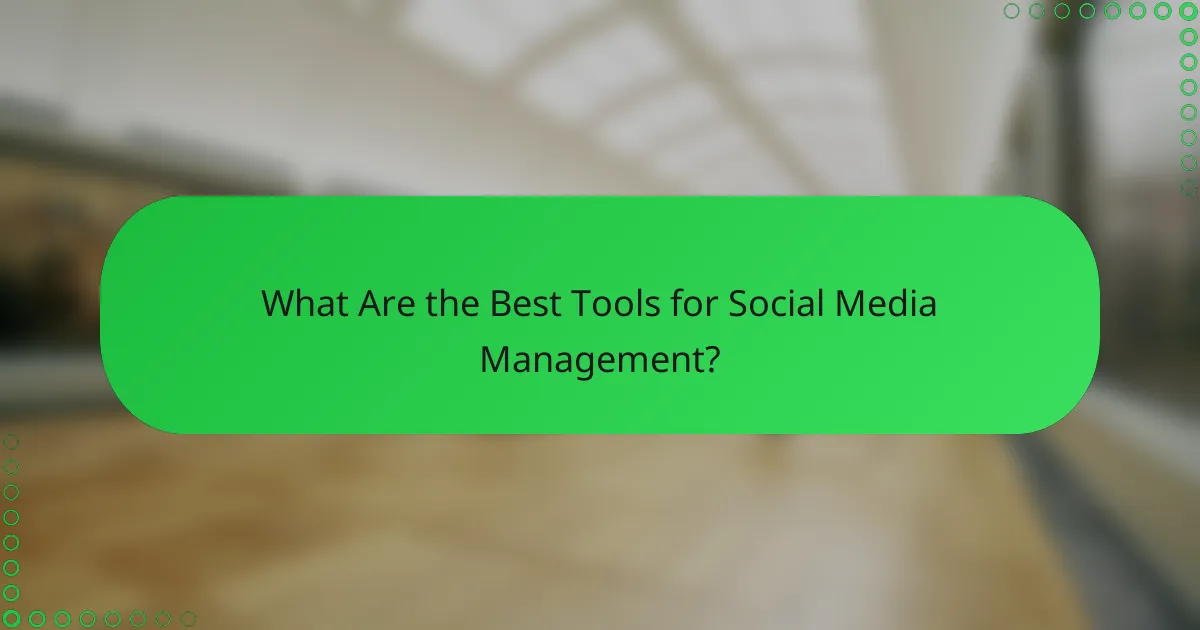Effective social media strategies are essential for enhancing engagement, reach, and content planning. By focusing on interactive and relatable content, brands can foster meaningful connections with their audience. Additionally, employing targeted advertising and strategic collaborations can significantly boost visibility, while a well-structured content plan ensures consistent interaction and adaptability to trends.

How to Increase Engagement on Social Media?
To increase engagement on social media, focus on creating content that resonates with your audience and encourages interaction. This can be achieved through various strategies, including interactive content, user-generated contributions, and direct engagement with followers.
Utilize interactive content
Interactive content, such as polls, quizzes, and surveys, can significantly boost engagement by inviting users to participate actively. This type of content not only captures attention but also provides valuable insights into audience preferences.
Consider using tools like Instagram Stories or Facebook Polls to create engaging experiences. Aim for a mix of fun and informative content to keep your audience interested and coming back for more.
Leverage user-generated content
User-generated content (UGC) involves sharing posts created by your followers, which can enhance authenticity and build community. Encourage your audience to share their experiences with your brand, products, or services, and showcase their contributions on your platforms.
For example, you could create a specific hashtag for followers to use when posting about your brand. This not only increases engagement but also provides you with a wealth of content to share.
Implement contests and giveaways
Contests and giveaways are effective ways to boost engagement and attract new followers. By offering prizes, you incentivize participation and encourage users to share your content with their networks.
Keep the rules simple and clear, such as requiring participants to like, comment, or share your post. Ensure that the prize is relevant to your audience to maximize interest and participation.
Engage with followers through comments
Responding to comments on your posts fosters a sense of community and encourages further interaction. Make it a habit to reply to comments promptly, whether they are positive or negative, to show that you value your audience’s input.
Consider asking open-ended questions in your posts to invite more comments. This not only increases engagement but also provides an opportunity to gather feedback and insights from your followers.
Use storytelling techniques
Storytelling can make your content more relatable and engaging. By sharing stories about your brand, customers, or industry, you create an emotional connection with your audience.
Use visuals and narratives that resonate with your target demographic. Aim for authenticity and relatability, as these elements can significantly enhance the likelihood of shares and interactions.

What Strategies Improve Social Media Reach?
Improving social media reach involves a combination of timing, targeted advertising, collaborations, and effective use of hashtags. By implementing these strategies, brands can significantly enhance their visibility and engagement with audiences.
Optimize posting times
Posting at optimal times can greatly increase your social media reach. Analyze when your audience is most active, typically during lunch hours or early evenings, depending on your target demographic.
Use analytics tools to track engagement patterns and adjust your posting schedule accordingly. Experiment with different times and days to find the sweet spot that maximizes visibility.
Use targeted advertising
Targeted advertising allows you to reach specific demographics based on interests, behaviors, and location. Platforms like Facebook and Instagram offer detailed targeting options that can help you connect with potential customers more effectively.
Set clear objectives for your ads, such as increasing brand awareness or driving traffic to your website. Monitor performance metrics to refine your approach and allocate budget to the most successful campaigns.
Collaborate with influencers
Partnering with influencers can significantly boost your social media reach by leveraging their established audiences. Choose influencers whose followers align with your target market for maximum impact.
Develop authentic collaborations that resonate with both your brand and the influencer’s audience. This could include sponsored posts, takeovers, or co-created content that highlights your products or services.
Utilize hashtags effectively
Using hashtags strategically can enhance your content’s discoverability on social media platforms. Research popular and relevant hashtags within your niche to increase the chances of reaching a broader audience.
Aim for a mix of trending, general, and specific hashtags to maximize engagement. Avoid overloading your posts with hashtags; instead, focus on a few that truly represent your content and brand identity.

How to Plan Content for Social Media?
Planning content for social media involves creating a structured approach to ensure consistent engagement and reach. This includes understanding your audience, scheduling posts, and adapting to trends to maximize impact.
Create a content calendar
A content calendar is essential for organizing and scheduling your social media posts. It helps you visualize your content strategy over weeks or months, ensuring a balanced mix of promotional, informative, and entertaining posts.
When creating a calendar, consider using tools like Google Sheets or specialized software like Trello or Hootsuite. Aim for a posting frequency that aligns with your audience’s engagement patterns, typically several times a week.
Analyze audience preferences
Understanding your audience’s preferences is crucial for effective content planning. Use analytics tools to track engagement metrics, such as likes, shares, and comments, to identify what resonates with your followers.
Surveys and polls can also provide direct feedback. Focus on demographics, interests, and behaviors to tailor your content, ensuring it aligns with what your audience values most.
Incorporate seasonal trends
Seasonal trends can significantly enhance your content’s relevance and engagement. Plan your posts around holidays, events, or seasonal themes that align with your brand and audience interests.
For example, create content related to New Year resolutions in January or summer activities in June. This approach not only keeps your content fresh but also encourages timely interactions with your audience.
Repurpose existing content
Repurposing existing content is an efficient way to maximize your resources. Take high-performing blog posts, videos, or infographics and adapt them for different platforms or formats.
For instance, a popular blog post can be transformed into a series of social media posts, a video, or even a podcast episode. This strategy saves time while ensuring your valuable content reaches a broader audience across various channels.

What Are the Best Tools for Social Media Management?
The best tools for social media management streamline scheduling, enhance content creation, and provide valuable analytics. Utilizing these tools effectively can significantly improve engagement and reach across various platforms.
Hootsuite for scheduling
Hootsuite is a powerful tool for scheduling social media posts across multiple platforms, allowing users to manage their content calendar efficiently. It supports various networks like Facebook, Twitter, and Instagram, making it easier to maintain a consistent posting schedule.
When using Hootsuite, consider its bulk scheduling feature, which enables you to upload multiple posts at once. This can save time and ensure your content is spread out over days or weeks. Be mindful of the optimal posting times for each platform to maximize engagement.
Canva for graphic design
Canva is an intuitive graphic design tool that helps create visually appealing content for social media. It offers a wide range of templates, images, and fonts, making it accessible for users with varying design skills.
To make the most of Canva, utilize its social media-specific dimensions for images to ensure your graphics fit perfectly on each platform. Regularly update your designs to reflect current trends and maintain brand consistency across all your posts.
Buffer for analytics
Buffer provides comprehensive analytics that help track the performance of your social media posts. By analyzing engagement metrics such as likes, shares, and comments, you can refine your content strategy based on what resonates with your audience.
Utilize Buffer’s reporting features to identify the best-performing posts and times for engagement. This data can guide your future content planning and help you allocate resources effectively. Regularly review your analytics to adapt to changing audience preferences and improve your overall social media strategy.

What Metrics Should You Track for Success?
To measure success in social media strategies, focus on engagement, reach, and content performance metrics. Tracking these metrics helps you understand audience interaction and the effectiveness of your content in achieving your goals.
Engagement Metrics
Engagement metrics include likes, shares, comments, and overall interactions with your posts. These figures indicate how well your content resonates with your audience and can guide future content creation. A high engagement rate often signifies that your audience finds value in your posts.
To improve engagement, consider asking questions in your posts or using polls. Aim for an engagement rate of around 1-5% as a benchmark, depending on your industry and platform.
Reach Metrics
Reach metrics measure how many unique users have seen your content. This includes organic reach from followers and paid reach from advertisements. Understanding your reach helps you evaluate the effectiveness of your promotional strategies.
To enhance reach, utilize targeted ads and collaborate with influencers. Aiming for a reach that is at least 10-20% of your follower count is a good starting point.
Content Performance Metrics
Content performance metrics assess how individual posts or campaigns perform over time. Key indicators include click-through rates (CTR), conversion rates, and the time spent on content. These metrics provide insights into what types of content drive traffic and conversions.
Regularly analyze your top-performing content to identify trends and replicate successful strategies. A CTR of 2-5% is generally considered effective, but this can vary by industry.
